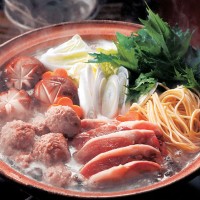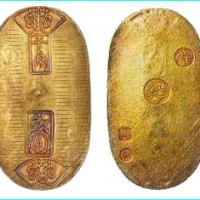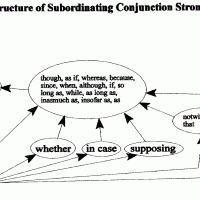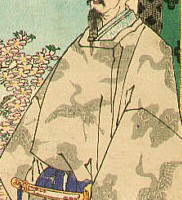Monthly Archives: January 2016
Thursday: Japanese Food
01/09/2016 blog
Kamo Nabe (Low Cholesterol Meat) Another ‘Nabemono (https://en.wikipedia.org/wiki/Nabemono)’ this week! It has been snowing and freaking cold here in New Mexico! How about in your area? Hope you have warmed yourself up to avoid getting sick. It is NOT fun to be sick, is it!? This week’s main ingredient is Kamo (= a wild duck/a mallard). It looks like this: (Before Caught) (After Caught) According to wikipedia.org, Kamonabe is the dish cooked in the pot with Nappa Cabbages, Scallions, Tofu, and so on. Hunters eat meat of Magamo ( = Mallard: https://en.wikipedia.org/wiki/Mallard), which they hunted by themselves while the public eat meat of ducks raised in breeding grounds or Aigamo …
Wednesday: Japanese Manga
01/07/2016 blog
EEsu-wo Nerae (=Aim for the Ace!) (https://en.wikipedia.org/wiki/Aim_for_the_Ace!) (https://youtu.be/2FtI06YX4cg) This manga was really sensational. Like bowling, every one of the Japanese nation wanted to be an Oka Hiromi (the main character). In this manga (1973 – 1975 in “Weekly Margaret”), Hiromi is depicted as an ordinary high school girl, who was interested in playing tennis for fun. Coach Munakata saw a glimpse of ‘diamond’ in Hiromi, however. So, Hiromi is going to turn into a ‘Tennis Queen’ along with ‘Mrs. Butterfly’ with merciless boot camp training by Coach Munakata. This is the whole plot of this manga. (Oka Hiromi) (a.k.a. Mrs. Butterfly) (Coach Munakata) (Comic Version) The writer/illustrator, Yamamoto Sumika (https://en.wikipedia.org/wiki/Sumika_Yamamoto), was not such an excellent …
Tuesday: Japanese Proverb
01/07/2016 blog
Neko-ni Koban (= To cast pearls before swine.) <Koban: https://en.wikipedia.org/wiki/Koban_(coin)> <The Proverb in English> Do you think Koban (= currency of any kind) makes cats happy? You know the answer…. <The Cat Unconcerned About Japanese Bills> Still, are you not trying to lecture the arrogant or the stubborn? Stop it! You are wasting time! Use your time wisely! TIME IS MONEY! Speaking of “TIME IS MONEY,” are you NOT wasting your money by hiring ‘MEDIOCRE’ Japanese teachers FOREVER with NO SIGNIFICANT PROGRESS? STOP IT NOW! Special Trial Lesson $19.99 <– Click here! Buy Trial Lesson ONLY for $19.99, you can tell your problem will be solved!
Monday: One Point Japanese Clinic
01/04/2016 blog
How To Use Conjunctions (3) (https://en.wikipedia.org/wiki/Conjunction_(grammar)#Subordinating_conjunctions) (Courtesy to http://www.clres.com/online-papers/sc.html) I would suggest you should read the paper at http://www.clres.com/online-papers/sc.html, where those diagrams shown above are located. This paper is rather for advanced learners or people like grammarians. So, that’s totally fine if you are not interested in reading it. It is, however, extremely resourceful if you are able to appreciate it. (Review of ‘Subordinating Conjunction) Let’s discuss “mae (= before)” and “ato (= after)” today! [Mae] According to “Japanese Grammar” (Keiko Uesawa Chevray/Tomiko Kuwahira, McGraw-Hill, 2011), “Mae” is an independent noun which means “the front” in English. The Clause or noun phrase of “mae” indicates “the time before -” in English. The …
Friday: Japanese Hero
01/02/2016 blog
Nintoku Tenno/Emperor Nintoku (https://en.wikipedia.org/wiki/Emperor_Nintoku) (Emperor Nintoku) NOT all emperors of Japan are bright and wise. Accordingly not all emperors of Japan were loved by Japanese nation. However, this particular emperor of Japan named Nintoku Tenno or Emperor Nintoku has been loved by 99.99% of the Japanese and this will be certainly true as long as the country of Japan exists in this world. His burial mound located in Osaka is the biggest one in Japan. (Entire View of His Burial Mound) (It is located in the middle of the city, which is well kept.) (Entrance of the Mound) There is one historical episode about Emperor Nintoku, which makes every one of the Japanese …
Thursday: Japanese Food
01/01/2016 blog
Yudofu (https://en.wikipedia.org/wiki/Tofu) (Typical Serving Suggestion) Yu (= Hot Water) + Tofu (= Tofu/Bean Curd) = Yudofu – this is one of the Japanese Nabemono (https://en.wikipedia.org/wiki/Nabemono) in winter season. Although Tofu has earned quite a lot of popularity in US, few Americans would appreciate simple way of cooking Tofu. You must have one of those nabe (=pot), preferably made of porcelain, and, like other Nabemono, you cook Yudofu at the table, surrounded by your family and guests. Soup stock is made with Konbu seaweed (https://en.wikipedia.org/wiki/Kombu), but other than that no sauce or nothing else is supposed to be added. After boiling water, you put Konbu seaweed in the water, waiting for the …
Wednesday: Japanese Manga
01/01/2016 blog
Maguma Taishi/Ambassador Magma (https://en.wikipedia.org/wiki/Ambassador_Magma) (Record Cover Jacket: https://youtu.be/iO8so6xYMXo) (Original Manga) It was not until ‘Maguma Taishi’ was televised that I noticed the existence of its manga, which was started in the magazine called Shonen Gaho (= Picture Magazine for Boys) in 1966. The author of this manga is, once again, Tezuka Osamu (https://en.wikipedia.org/wiki/Osamu_Tezuka). In 60’s, Tezuka was such a busy man that he used a ghost writer for the last chapters of Maguma Taishi in the magazine, which part didn’t turn out to be comics because he didn’t want the publisher to use his name as an author when he didn’t actually get involved in the production. TV version of Maguma Taishi …










